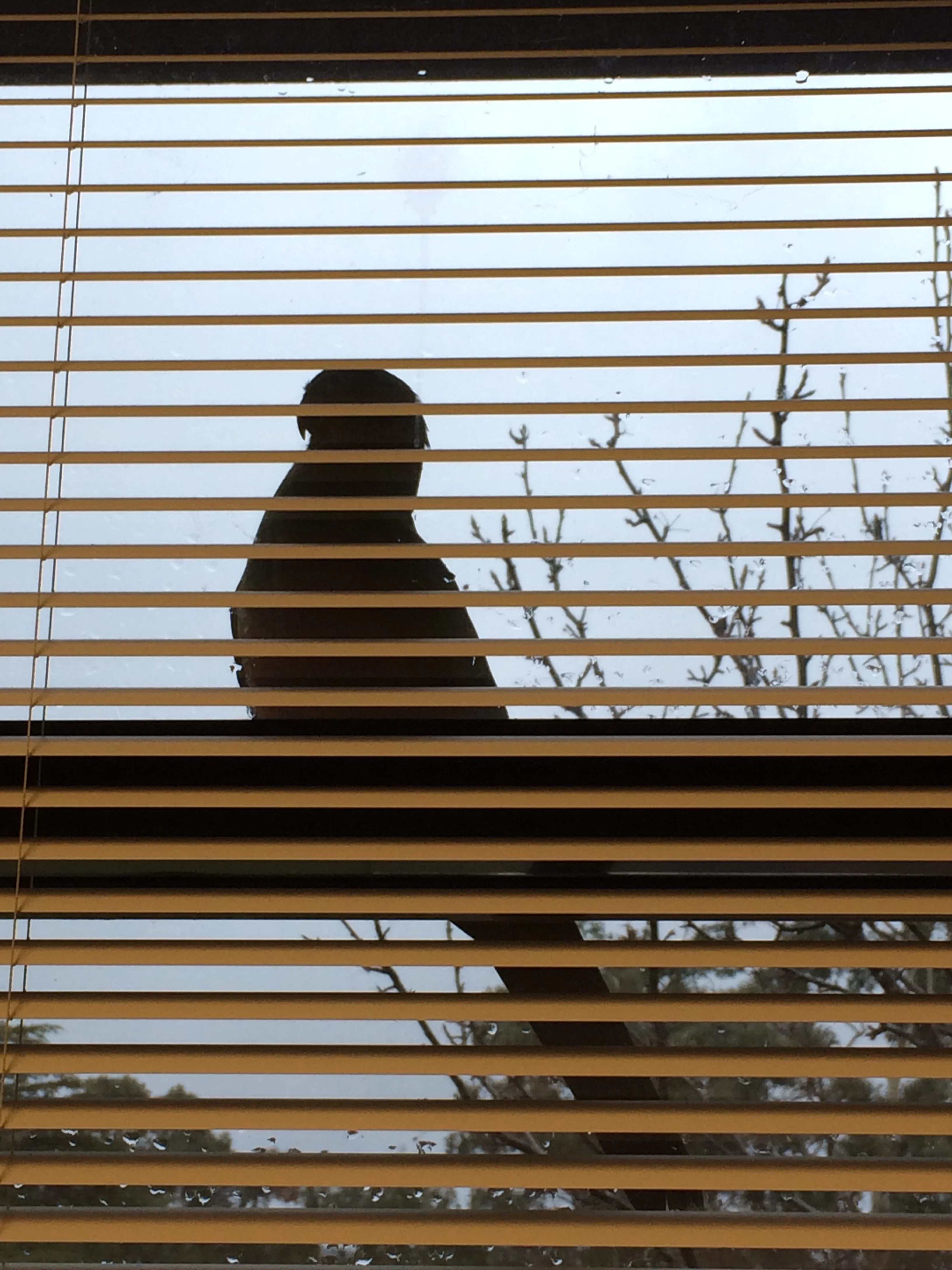Essay written for the the exhibition Trespass by Genevieve Swifte, shown at the Front Gallery in Canberra in 2014
Closer
Have you ever found a dead bird and gently fanned open its wing?
It is spring in the untended garden of my home, a universe of wind and chaotic growth and birds. The wattle birds fill the ti tree with their choking shriek, the trickster galahs rule the tv antenna and the tiny spotted pardalotes dart and flit, nesting in wall and tree trunk. A magpie eyes the cat sleeping on the rusting car and the rosellas feast in the native shrubs. The soundscape beyond my desk is a hum of distant traffic accented with birdcall.
Occasionally a bird crashes into a window. I once held a stunned silvereye on the palm of my hand before it gathered its wits and flashed away.
The birds are visitors – they inhabit another world – they appear and disappear with the changing seasons, always near but never completely here. They offer an imaginary escape into space and time that goes beyond my earthbound experience.
These prosaic moments of daily life are thrown into relief when I open my email to become immersed in the subtle shifting details of Genevieve Swifte’s photography. I first encounter her work in its digital form, as light on a screen drawing me in to inspect intimate objects and intriguing landscapes. Later, I see the work printed: lush, light-textured surfaces blurring into an indeterminate darkness.
For me these quiet photographs evoke sounds – the beat of invisible wings overhead, a sharp intake of breath, the crisp shifting of cotton as a hand drops into a lap, the rush of air carrying snow over frozen ground. They are intimate fragments, telling partial stories, leaving space for the viewer to make connections.
Slow photography
It is pertinent to remember that the process of photography neither begins nor ends with the click of the camera shutter. Swifte’s work is slow photography; she collects images over years, travels vast distances and looks with intent. Her gaze is investigative and poetic – calling up and creating a play between strands of history, theory and photographic practice as she works across analogue and digital; in the landscape and studio; archive and domestic environment.
Swifte frames her subjects carefully, looks for connections, tensions and aesthetic resonances. A wing extended as if in flight – echoes the sweep of a mountain upwards towards the snow line. The spotted feathers of an owl draw the eye into a close investigation of line, texture and mark, contrasting with the human-made patterning of an embroidered garment. Spots are juxtaposed with holes – the images blur providing softness, areas for the eye to glance over, returning to the focal points. There is something about this blur that pushes back at me – the shallow depth of field blocks a searching eye hinting at the unseen and unknown.
This slowness is a counterpoint to many assumptions about contemporary photographic practice, there is nothing instant here. Bird wings and bird bodies are drawn from a scientific archive and placed before the camera. Swifte takes a torch and performs the act of raking light over the surface of the body as the long-exposure allows this otherworldly light to reach the film.
She processes the film in the darkroom, and scans the negatives, the material manifest in a digital incarnation. The use of scanning enables Swifte to work the images in the digital space, removing dust, enlarging and generating different combinations and compositions. She edits, reproduces and prints – this process is one of building relationships as well as articulating and exploring boundaries.
Trespass
The word Trespass has many associations for me. Growing up Catholic, I hear it in my memory as a snaky whisper of school children rushing though the Lord’s Prayer – asking for forgiveness of trespasses and forgiving others for their trespasses. The eye of my memory sees roughly painted signs warning of prosecution and shooting punishments for trespassers over forbidden land.
Trespasses are actions – decisions made to enter unknown territory.
The title of the exhibition Trespass draws attention to the notion of transgression. This can be seen directly in the subjects of the photographs where the boundaries between bodies; between skin, feather, fabric, water, cloud and mountain are explored. There is a play in the combination of images. In the paired works a line down the centre creates a split, but the resonances in pattern, form and texture shift across this boundary. There is also a larger conversation across the exhibition. Clouds, mountains, a scrubby mass of trees at the waters edge provide counterpoints to the closeness of the feathers and fabric. They call me to consider my own body, remember my own experiences of mountains, water, sky.
Birds make very effective trespassers – able to navigate the entire planet – turning up in unexpected places – living in the air – spreading seeds and microbial life forms on their travels. Their trespassing could be seen as an analogy for the artist’s process – constantly questioning – making connections – bringing ideas to light – creating fictions – telling truths.
Ellis Hutch
